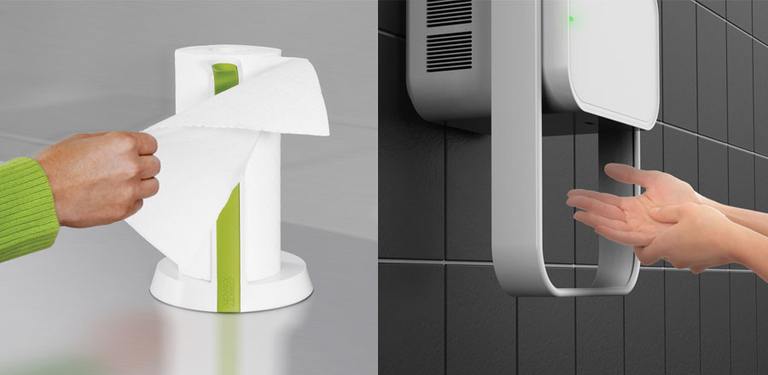
There Could Be Real Revenue In Your Rooftop

Enamored with the freedom of flight, however, Icarus ignored his father and soared high into the sky, drawing closer and closer to the sun. We probably all know how the story of Icarus ends when the sun melts the wax that formed his wings, but for building owners, landlords and managers, looking toward the skies can hold great promise.
Have you ever looked at the satellite view in Google maps? As you use the program to “fly” over cityscapes, across suburban shopping centers and down main streets across America, despite varying urban and suburban planning models, the one thing that remains consistent is rooftops. Lots and lots of rooftops. They stand out on the maps as vast swatches of white or black surfaces representing potentially valuable commercial real estate.
The Value in Rooftop Real Estate
Rooftops of commercial real estate have long been areas of opportunity. Historically, restaurants, nightclubs and outdoor lounges have adorned rooftops in metropolises across the United States. Because of the nature of these types of enterprises which require large amounts of capital, extensive permitting, substantial insurance and safety procedures, the presence of these installations is comparatively limited. In fact, most suburban neighborhoods are hard-pressed to identify a rooftop eatery or lounge and it’s unclear if that’s due to costs or the lack of appeal for being four stories up as opposed to 40.
Despite the somewhat questionable nature of using rooftops for hospitality related endeavors, there’s still revenue that can be generated from unused rooftop space. The best opportunities for this today are with solar and telecommunications in both urban and suburban settings.
Cell tower leases can generate $10,000 per year or more depending on location and how closely your location matches to the carrier footprint. The United State Energy Information Agency forecasts that total U.S. small-scale solar photovoltaic capacity will grow from 14.3 gigawatts (GW) at the end of April 2017 to 21.9 GW – and roughly a third is predicted to come from commercial and industrial installations. This signals big opportunities for commercial real estate to make their rooftops available to both telecommunications and energy companies.
Fly toward the sun carefully
Building owners may be attracted to the idea of leasing space on rooftops for antennas or solar panels, but it’s important to remember that these types of rooftop lease agreements present an entirely separate and unique set of issues apart from typical tenant leases. Top among these are structural and access considerations. Leasing rooftop space is not without its intricacies and precautions do need to be taken. Chief among these concerns is the nature in which the leased space is used. Remember, anyone installing equipment on your rooftop is concerned chiefly with their own bottom line. This could mean diminishing your opportunity to lease to others that may be interested in your rooftop space. In other instances, a haphazard installation could crowd your HVAC equipment curtailing efficiency or making servicing difficult. While rarely done intentionally, installing equipment as inexpensively as possible is a standard cost-cutting measure and sometimes installation can void roofing warranties or cause leaking or other structural damage.
Not all rooftops are equal
If the idea of leasing your rooftop is still appealing, despite the cautionary statements, you should know that just because you’re willing, your rooftop may not be suitable. According to data from the National Renewable Energy Laboratory, the primary US research and development center for renewable energy, only a quarter of commercial and residential rooftops are suitable for solar panels. Cell tower development companies, on the other hand, will only be interested in your location if it provides the opportunity to expand their footprint or better support their existing customers. Additionally, if installation on your rooftop would prove too costly, time-consuming or restrictive, they may choose to build elsewhere.
Even if cellular or solar don’t work out for your rooftop, don’t despair, new and exciting rooftop usage is happening all the time. Rooftop apiaries are helping to revive the presence of honey bees across the United States and enabling the honey producing pollinators to live in relatively protected environments. Or, how about a rooftop farm? In 2009, the Eagle Street Farm in Greenpoint, NY opened, becoming New York City’s first commercial rooftop farm. Since then as the trend to eat local foods within urban areas has grown, rooftop farming has grown in popularity and profitability across the United States.
Four big considerations in rooftop leasing
Review the Lease – Be sure to have the lease reviewed by a professional. There are lawyers dedicated specifically to this type of contract. Know the real-world effects that a rooftop installation will have on your building in the short and long term.
Understand Industry Dynamics – Understand all you can about the company that has approached you and check their track record for providing a fair market value. Assess the probability of future expansions and understand risks that might come from mergers, acquisitions, and/or technological innovations.
Get Fair Market Valuation – Work with a professional valuation company to understand lease rates for rooftops in your area. You should walk away with a clear picture on recommended rent, escalation and revenue sharing amounts.
Be prepared to negotiate – It’s your rooftop. You should be comfortable with the terms of the agreement before solar panels or cell towers are installed. Make sure your interests are being served.
